If you visit the American National Museum of Natural History in Washington DC, don’t forget to stop by a collection of their gems and minerals. The most striking of these specimens displayed here is a blue diamond that is unique in the world.
It’s called the Hope, or the Hope diamond. There is not a single natural diamond in the world as large as 45 karat and as dark blue as the Hope. Its value can be up to 320 million USD.
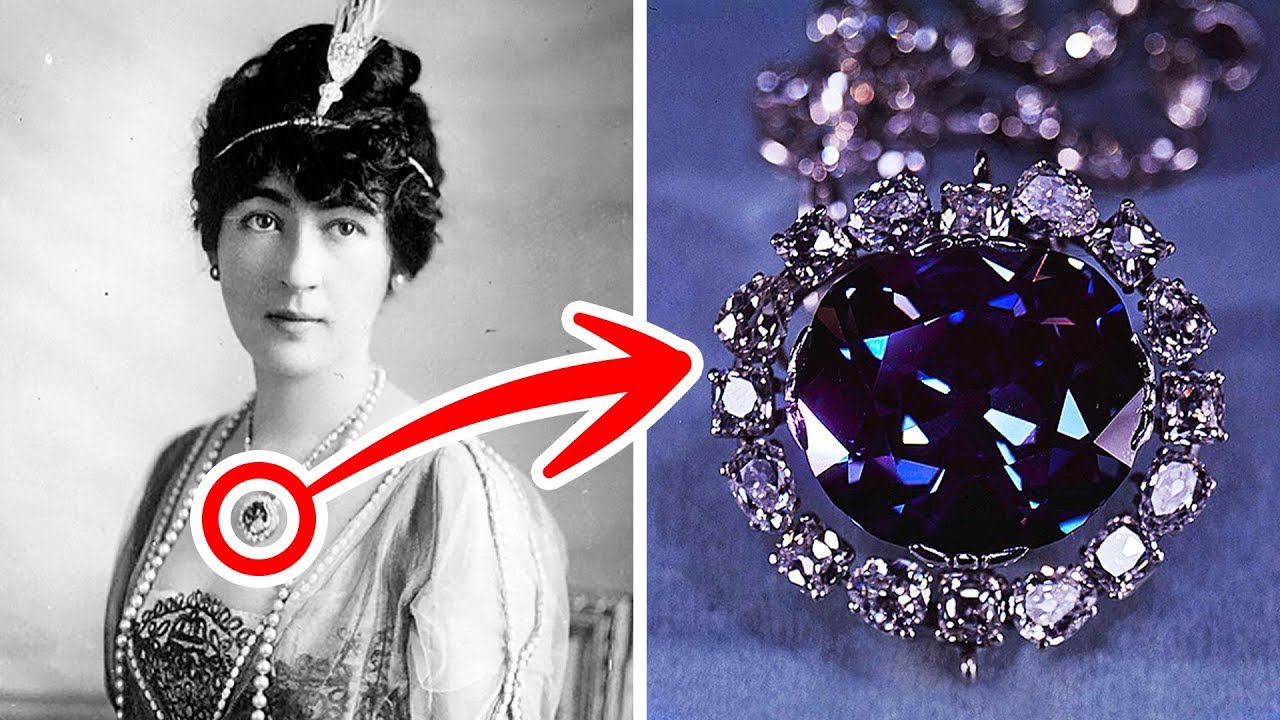
The Hope diamond and Evalyn Walsh McLean, the last to own it as a private property in 1911.
But contrary to the name Hope, Hope was once considered a cursed diamond. Since being found and crafted in India in 1653, Hope has passed through about 20 owners. Of these, up to 14 people are said to have had bad luck related to it, some murdered, others afflicted with mysterious diseases.
It is possible to mention the death of Tavernier, the first Indian merchant to own this diamond, he was attacked by a pack of wild dogs and died on the spot. Next was the death of the French king Louis XVI and the queen, two people who owned diamonds were executed by guillotine.
Ivan Kanitovsky a Russian prince once owned a blue diamond. When he gave it to his mistress, she was shot dead the first night she wore it. Two days later, Prince Kanitovsky himself was murdered.
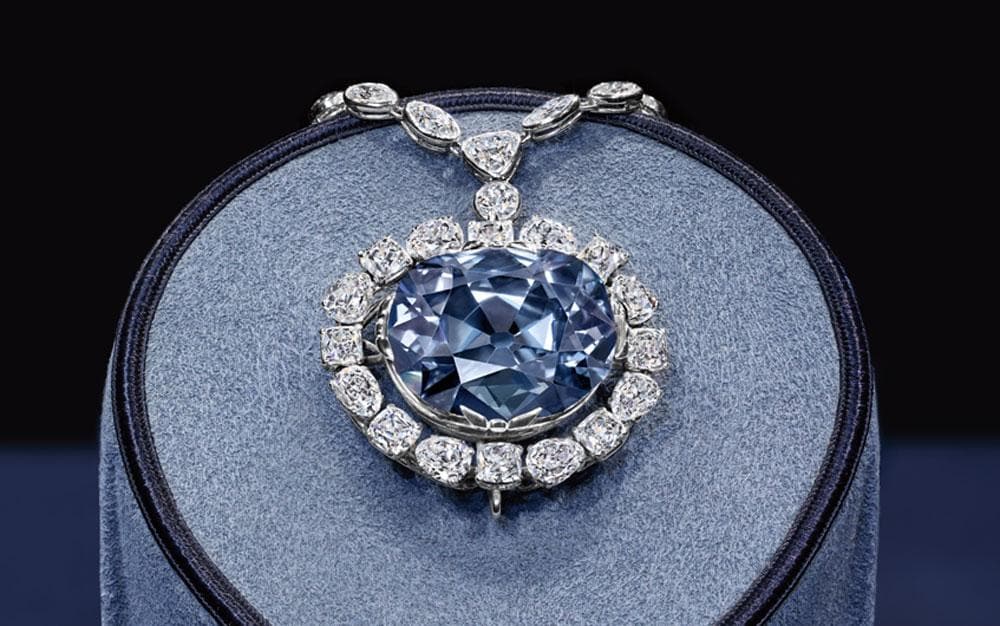
Those are the rumors that people still say about the Hope diamond. But Steven Shirey, a geologist at the Carnegie Institution for Science, is not interested in all of this.
What he saw in this blue diamond and every other blue diamond was just boron, the compound that gives it its alluring blue color.
One out of every 200,000 diamonds in the world is blue because of boron contamination. They were formed billions of years ago, in the mantle hundreds of kilometers below the Earth’s surface.
Boron-contaminated blue diamonds are tempered to a greater pressure and depth than any other colored diamond. Therefore, “they really are special time machines“, Shirey said.
According to him, the blue diamonds are holding more scientific mysteries than mystical stories. They are truly the messengers of geology.
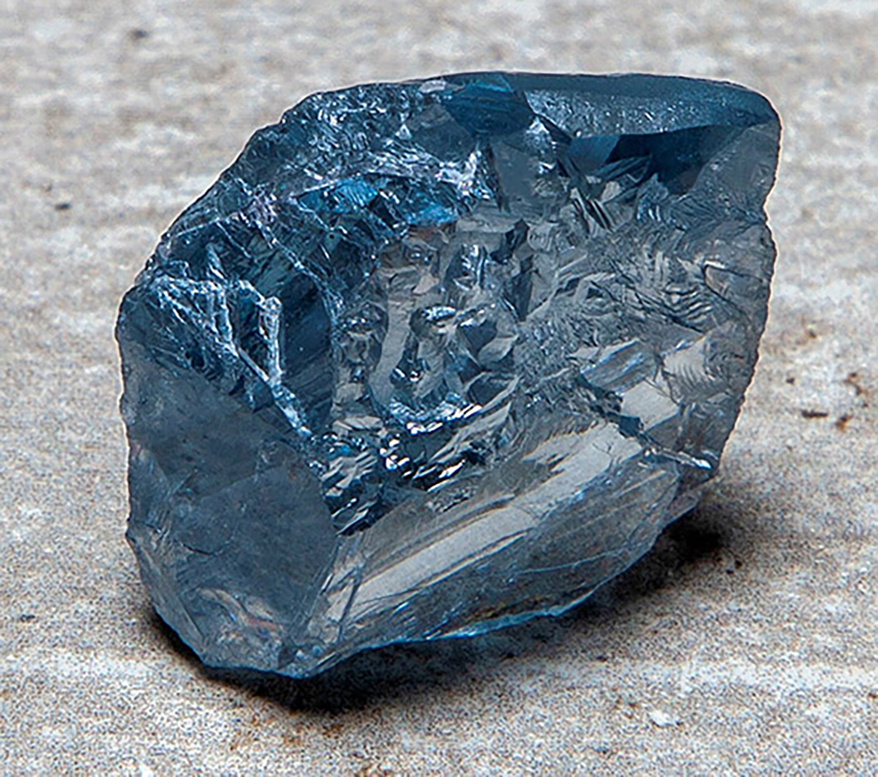
How are diamonds formed?
We’ve all heard that diamonds are formed when carbon is tempered under pressure. But what exactly is that pressure?
In nature, most diamonds are formed under extreme pressures and temperatures in the Earth’s mantle. As the mantle beneath the planet’s crust and above the core, the mantle contains silicate minerals, which provide the carbon and hydrothermal viscosity for diamond formation.
Most diamonds are tempered 150 to 250 kilometers below the surface of the earth. But in particular, the blue diamonds are formed at the greatest depth, up to nearly 700 km, where the boron gives it its blue color.
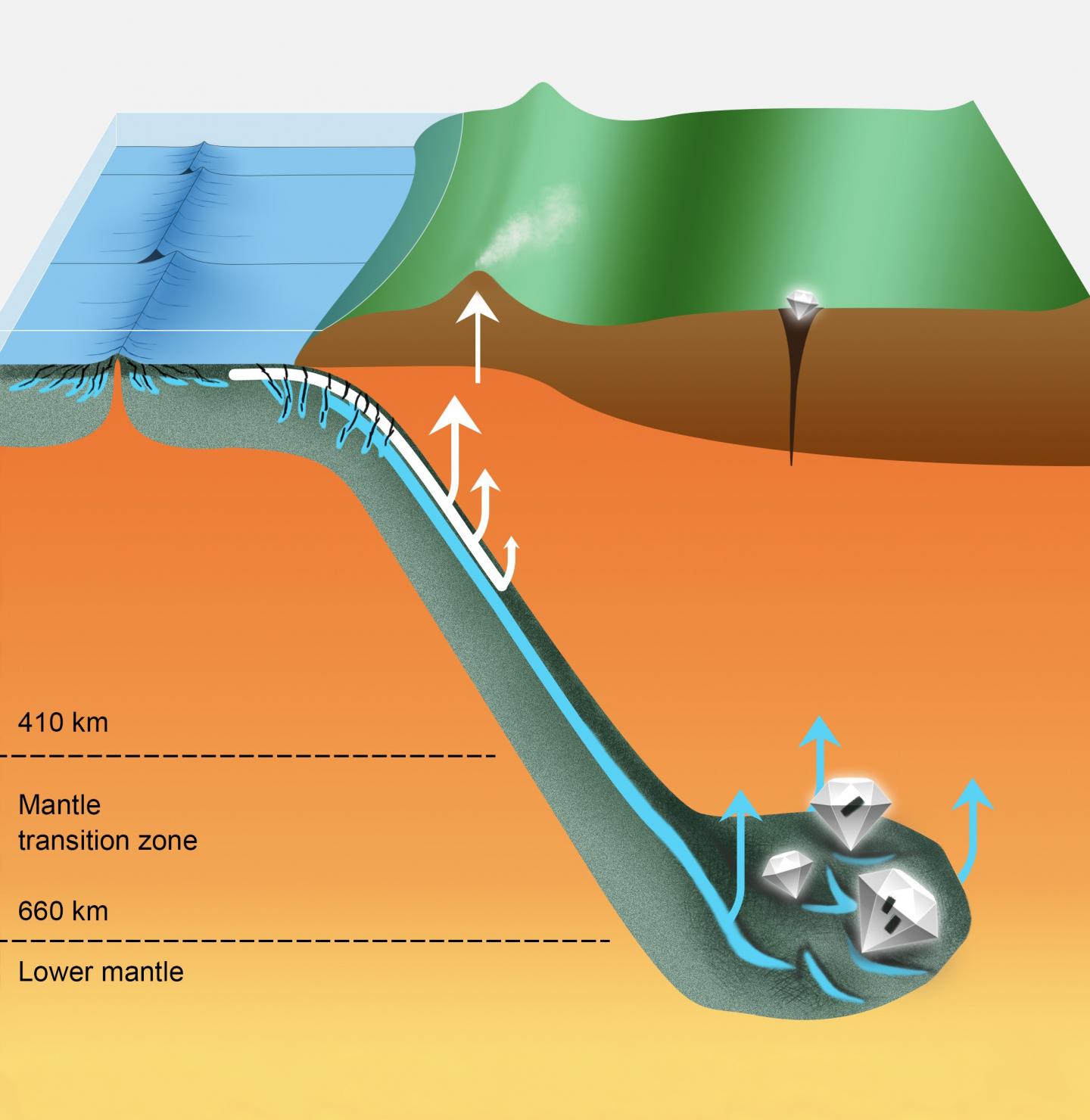
After a formation process that lasts from a few million to billions of years, diamonds are pushed from the mantle to near the surface of the earth through volcanic activity. These eruptions have been going on for a long time in Earth’s history and are particularly intense.
Because diamonds need to be brought from the mantle to the surface very quickly to cool, otherwise they could literally turn into graphite along the way. Violent volcanic eruptions of this type have only been seen in history when the Earth’s geological processes were active.
Today, we do not witness any eruptions of this magnitude. Therefore, theoretically the amount of diamonds pushed up near the surface of the earth is now finite. Humans also have no way to drill down to the mantle layer to mine diamonds.
All of this adds value to diamonds, both physically and scientifically.
Diamond as a geological messenger
Because they have been buried deep beneath the Earth’s surface for billions of years, diamonds are often compared to geologists as messengers of time. Analyzing minerals mixed in diamonds, such as boron in the case of blue diamonds, can provide geologists with a prism into how the mantle worked in the past.
In a study published last year in the journal Science Advances, Shirey and colleagues found that these blue diamonds contain evidence that past seafloor tectonics have sunk into the mantle.
It is conceivable that it is a period in which the Earth melts its own surface, in order to recycle material on the surface into its core. While this material sinks, diamonds are being pushed up and trapped inside evidence of that process.
“Studying the small mineral samples formed during diamond’s deep crystallization can teach us a lot about the composition and dynamics of the mantle, because diamonds protect the minerals from changes in the mineral. replenish on their way to the surface“, Shirey said.
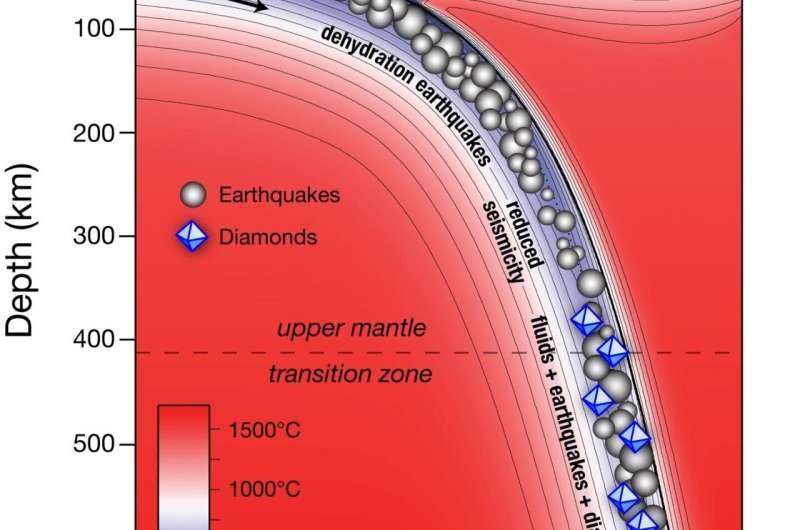
In a new study to be presented at this year’s Annual Meeting of the Seismological Society of America, Shirey and her team made another discovery from blue diamonds.
Because they are the only diamonds that form at a depth of nearly 700 km, these diamonds are proof that in the past, our planet has witnessed very strong earthquakes below the Mantle layer .
Most earthquakes today occur near the Earth’s surface with a depth of only about 70km. This type of earthquake occurs because pressure builds up at a fault between two rocks, causing the blocks to suddenly slide past each other.
But in the past, earthquakes have occurred as deep as 700 km. They form when liquid water from the Earth’s crust is submerged into the mantle, during the aforementioned recycling of the Earth’s crust.
Diamonds form in liquid so, if the diamond is there, the liquid must be under there, Shirey said. “We know the fluids are down there, we know they’re in motion, and the petrographic structure of diamonds tells you that, because these diamonds always form in regions of the mantle where the material is located.” liquid in motion”.
So, more than just beauty, blue diamonds are hiding more scientific data than the mystical stories surrounding them. These diamonds are worthy treasures of geology and seismology.
Refer to Scitechdaily, Phys, Smithsonianmag
